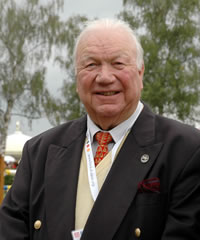[/caption]

Aachen, Germany, September 1, 2006 — “I’m an old cowhand, from the Czech Republic…”
Hmm, maybe that version of the song doesn’t have hum-ability, but it fits right in with reining at the World Equestrian Games (WEG). When I think of loping along in a stock saddle, the first image that comes to mind isn’t a cowpoke from Prague or Geneva, but since reining has taken Europe by storm, you better get used to it.
Europe, heck. There are plenty of other continents that are getting into the game too. Israel had a reining team at the WEG, as did Brazil, and by the 2010 WEG, you’ll be seeing a squad from South Africa and probably more than one from Asia, too, not to mention Australia–the next target area for the National Reining Horse Association.
Antonio Mastrangelo, the chef d’equipe for the Italian reining team, told me when I asked what was so appealing about being a cowboy that the interaction with others who share an interest in the sport is the basis for great friendships and a special lifestyle whose appeal stretches far beyond the U.S.
But America is still on top in the sport with its roots in herding cattle (though maybe not for long, the way the rest of the world seems to be catching up). The U.S. won team gold in the discipline this year for the second time since it was first included in the WEG four years ago.
But Canadian anchor rider Duane Latimer (who not surprisingly competes regularly against the Americans) was the top-placed individual in the team competition to lead his squad to the silver medal, while Italy won the bronze for the second consecutive WEG.

The sport’s promoters are eager to see it gain even further acceptance, but it’s doing really well at the moment, with 30 percent more teams at this WEG than in Jerez during 2002.
The 15 squads on hand, which all add their own touches to the game, included an all-female contingent from Switzerland. The Swiss cross seen on the nation’s flag was outlined in silvery sparkles on the traditional western shirt the ladies wore.
Practically every horse (with the exception of a Slovakian appaloosa and paints from Canada and France) is registered with the American Quarter Horse Association.
Whatever language the riders and their supporters speak, they all hoot and holler the same way their equivalents do at shows in Albuquerque or Abilene.
The biggest disappointment for me today was seeing American anchor man Matt Mills’ mount, Easy Otie Whiz, not quite on his game. His sliding stops were far from classic, and the always gracious Matt conceded that the horse had a problem with the footing. To hear Matt’s detailed assessment, click on the sound byte below.

Even though Matt had the drop score in the team competition, he’ll have another chance to prove himself in the international arena, along with the rest of the squad, when the competition for the individual medals takes place on Sunday.
That’s also the day the WEG ends. Hard to believe, seems as if I’ve been here forever. While I love reporting on the competition, I’m ready to go home and start resting up to prepare myself for the next WEG in 2010, which will be hosted by the Kentucky Horse Park–no overseas flight involved. Yay!
Visit EquiSearch’s WEG section for more stories, blogs and online diaries, and chat about the WEG with fellow fans in the EquiSearch Forum.






